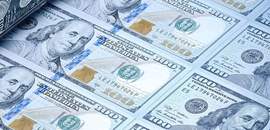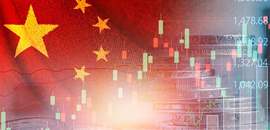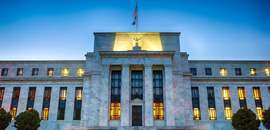With the U.S. economy in the throes of a powerful expansion, the main uncertainty is whether the pickup in inflation this year will prove temporary or ongoing. Amid the debate, economists are questioning how to interpret incoming data and the macro framework for assessing the inflation outlook.
The measure that Fed officials and investors currently focus on is the core rate of CPI inflation that excludes food and energy. The origins date back to Arthur Burn’s tenure as Fed Chairman in the early 1970s, when oil and commodity prices soared.
According to Stephen Roach, Burns’ rationale for excluding these items was they were highly volatile and were influenced by exogenous factors. Burns argued that the quadrupling in oil prices in 1973 had nothing to do with monetary policy, and he linked soaring food prices to a weather event that decimated Peruvian anchovies. Roach contends that Burns lacked a macro framework to assess inflation and at one point wanted to exclude about 65% of the CPI index for ad hoc reasons. It was not until 1975 that he conceded the U.S. had an inflation problem.
The debate over how to interpret individual components of the CPI has resurfaced today. Fed officials maintain that large increases in items such as food, construction materials, semiconductors, used cars and car rentals, and appliances stem from supply disruptions linked to COVID-19. They believe the price pressures will lessen as the pandemic fades.
Last week, some commentators were quick to declare that inflation had peaked when the core CPI in July moderated to 4.3% increase from 4.5% in June mainly due to a flattening of used car prices. However, Jason Furman, an advisor to President Obama, argues that recent price increases are not the result of a few “freakish” categories. He notes that when food, shelter, energy, and used cars/trucks are excluded, price increases have been rising above trend since the beginning of this year. This suggests inflation pressures are not solely tied to the pandemic.
Looking ahead, one reason for expecting inflation readings will stay elevated has to do with the cost for shelter, the largest component of the CPI at 33%. It rose by 0.4% in July for the fourth consecutive month, and the owner’s equivalent rent component does not yet reflect the record surge in U.S. home prices over the past year. Also, rents could rise from relatively low levels as workers return to cities once offices reopen.
Another important consideration is there are considerable costs increases in the pipeline. The producer price index for July rose by 1.0%, lifting its year-to-year increase to 7.7%, and to 6.2% excluding food, energy and trade services. They will likely work their way into the CPI in coming months.
Weighing these factors, the most likely outcome is that inflation readings will stay above the Fed’s average annual target of 2%. Furman believes that if inflation settles around 3%, the Fed would probably tolerate the overshoot. However, if it winds up near 4%, the Fed would likely be compelled to tighten monetary policy.
This raises the issue of how the Fed views the long-term determinants of inflation. In his Congressional testimony in February, Fed Chair Jerome Powell responded to a question about the role money supply plays by stating: “When you and I studied economics a million years ago, M2 and monetary aggregates seemed to have a relationship to economic growth. Right now M2 does not really have important implications. It is something we have to unlearn I guess.”
In the same testimony, Powell also maintained that a low unemployment rate does not necessarily result in inflation. When the Fed considers it goal of maximum employment, he responded that “we don’t just mean the unemployment rate, we mean the employment rate” measured against the population as a whole. Put differently, Powell was acknowledging that the Phillips Curve—which depicts an inverse relation between the level of unemployment and the rate of inflation—was flat.
Having rejected two long-standing tenets about inflation, the Fed needs to articulate the macro framework it uses to assess inflation prospects.
Specifically, three key issues need to be addressed: First, where is the economy operating today in relation to its productive potential? Second, how long will it take before the output gap closes? Third, how does the Fed take into account the prospect of outsized budget deficits?
With respect to the first two issues, the economy is now back to the level of GDP prior to the COVID-19 pandemic, but it has not yet reached its productive potential because the number of people employed has not recovered fully. However, the gap between actual output and the economy’s potential output is narrowing rapidly.
Earlier this year, for example, the Congressional Budget Office (CBO) estimated it would take several years to close the gap. Meanwhile, CBO has raised its growth projections for this year and next year to 6.7% and 5.0%, respectively, due to the reopening of the economy and fiscal programs that have been enacted. Its latest forecasts calls for real GDP to exceed its potential by 2 percent next year and to stay above potential until the middle of this decade. Therefore, it would be helpful to know how the Fed’s forecasts compare.
With respect to fiscal policy, the Fed views relief payments as one time transfers that are not inflationary. However, if the Biden administration initiatives pertaining to infrastructure and social programs are enacted, the federal budget deficit will stay well outside the normal ranges for the foreseeable future. If so, how should the Fed take this in account in setting monetary policy?
Hopefully, Fed Chair Powell will address these issues at the Jackson Hole convocation held from August 26-28. Otherwise, investors will be left to react to incoming data on inflation without a clear understanding of how the Fed views its long-run determinants.
A version of this article was posted to TheHill.com on August 16, 2021.
The measure that Fed officials and investors currently focus on is the core rate of CPI inflation that excludes food and energy. The origins date back to Arthur Burn’s tenure as Fed Chairman in the early 1970s, when oil and commodity prices soared.
According to Stephen Roach, Burns’ rationale for excluding these items was they were highly volatile and were influenced by exogenous factors. Burns argued that the quadrupling in oil prices in 1973 had nothing to do with monetary policy, and he linked soaring food prices to a weather event that decimated Peruvian anchovies. Roach contends that Burns lacked a macro framework to assess inflation and at one point wanted to exclude about 65% of the CPI index for ad hoc reasons. It was not until 1975 that he conceded the U.S. had an inflation problem.
The debate over how to interpret individual components of the CPI has resurfaced today. Fed officials maintain that large increases in items such as food, construction materials, semiconductors, used cars and car rentals, and appliances stem from supply disruptions linked to COVID-19. They believe the price pressures will lessen as the pandemic fades.
Last week, some commentators were quick to declare that inflation had peaked when the core CPI in July moderated to 4.3% increase from 4.5% in June mainly due to a flattening of used car prices. However, Jason Furman, an advisor to President Obama, argues that recent price increases are not the result of a few “freakish” categories. He notes that when food, shelter, energy, and used cars/trucks are excluded, price increases have been rising above trend since the beginning of this year. This suggests inflation pressures are not solely tied to the pandemic.
Looking ahead, one reason for expecting inflation readings will stay elevated has to do with the cost for shelter, the largest component of the CPI at 33%. It rose by 0.4% in July for the fourth consecutive month, and the owner’s equivalent rent component does not yet reflect the record surge in U.S. home prices over the past year. Also, rents could rise from relatively low levels as workers return to cities once offices reopen.
Another important consideration is there are considerable costs increases in the pipeline. The producer price index for July rose by 1.0%, lifting its year-to-year increase to 7.7%, and to 6.2% excluding food, energy and trade services. They will likely work their way into the CPI in coming months.
Weighing these factors, the most likely outcome is that inflation readings will stay above the Fed’s average annual target of 2%. Furman believes that if inflation settles around 3%, the Fed would probably tolerate the overshoot. However, if it winds up near 4%, the Fed would likely be compelled to tighten monetary policy.
This raises the issue of how the Fed views the long-term determinants of inflation. In his Congressional testimony in February, Fed Chair Jerome Powell responded to a question about the role money supply plays by stating: “When you and I studied economics a million years ago, M2 and monetary aggregates seemed to have a relationship to economic growth. Right now M2 does not really have important implications. It is something we have to unlearn I guess.”
In the same testimony, Powell also maintained that a low unemployment rate does not necessarily result in inflation. When the Fed considers it goal of maximum employment, he responded that “we don’t just mean the unemployment rate, we mean the employment rate” measured against the population as a whole. Put differently, Powell was acknowledging that the Phillips Curve—which depicts an inverse relation between the level of unemployment and the rate of inflation—was flat.
Having rejected two long-standing tenets about inflation, the Fed needs to articulate the macro framework it uses to assess inflation prospects.
Specifically, three key issues need to be addressed: First, where is the economy operating today in relation to its productive potential? Second, how long will it take before the output gap closes? Third, how does the Fed take into account the prospect of outsized budget deficits?
With respect to the first two issues, the economy is now back to the level of GDP prior to the COVID-19 pandemic, but it has not yet reached its productive potential because the number of people employed has not recovered fully. However, the gap between actual output and the economy’s potential output is narrowing rapidly.
Earlier this year, for example, the Congressional Budget Office (CBO) estimated it would take several years to close the gap. Meanwhile, CBO has raised its growth projections for this year and next year to 6.7% and 5.0%, respectively, due to the reopening of the economy and fiscal programs that have been enacted. Its latest forecasts calls for real GDP to exceed its potential by 2 percent next year and to stay above potential until the middle of this decade. Therefore, it would be helpful to know how the Fed’s forecasts compare.
With respect to fiscal policy, the Fed views relief payments as one time transfers that are not inflationary. However, if the Biden administration initiatives pertaining to infrastructure and social programs are enacted, the federal budget deficit will stay well outside the normal ranges for the foreseeable future. If so, how should the Fed take this in account in setting monetary policy?
Hopefully, Fed Chair Powell will address these issues at the Jackson Hole convocation held from August 26-28. Otherwise, investors will be left to react to incoming data on inflation without a clear understanding of how the Fed views its long-run determinants.
A version of this article was posted to TheHill.com on August 16, 2021.



















